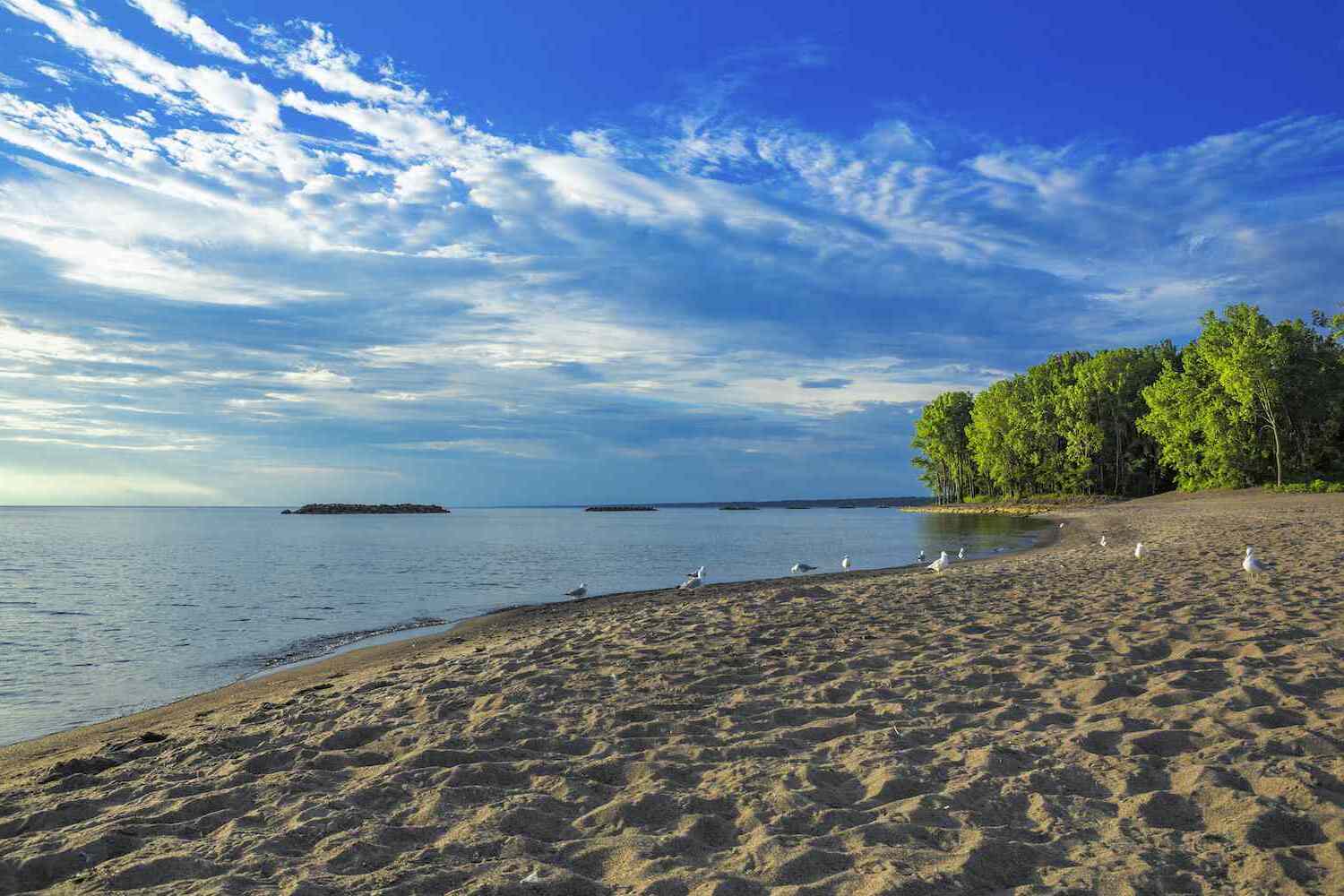
Lake Erie, one of North America's Great Lakes, is a treasure trove of natural wonders and intriguing history. Did you know it's the fourth largest of the Great Lakes by surface area but the shallowest? This makes it the warmest and most biologically productive. Lake Erie is home to over 130 fish species, making it a fishing paradise. Its shores have witnessed significant historical events, including the Battle of Lake Erie during the War of 1812. The lake also boasts stunning islands, like South Bass Island, known for its vibrant summer tourism. Ready to dive into more fascinating facts about Lake Erie? Let's get started!
The Basics of Lake Erie
Lake Erie is one of North America's Great Lakes. It holds a lot of history, natural beauty, and interesting facts.
- Lake Erie is the fourth largest of the Great Lakes by surface area, but the smallest by volume.
- It is named after the Erie people, a Native American tribe that lived along its southern shore.
- The lake spans 241 miles in length and 57 miles in width.
- Lake Erie touches four U.S. states: Ohio, Pennsylvania, New York, and Michigan, as well as the Canadian province of Ontario.
Natural Wonders
Lake Erie is home to many natural wonders, from its diverse wildlife to its unique geological features.
- The lake has over 24 islands, the largest being Pelee Island in Ontario.
- Lake Erie is the shallowest of the Great Lakes, with an average depth of just 62 feet.
- Due to its shallow depth, it warms quickly in the summer and freezes over more frequently in the winter.
- The lake is a critical habitat for many species of fish, including walleye, perch, and bass.
Historical Significance
Lake Erie has played a crucial role in the history of the region, from early Native American settlements to pivotal battles.
- The Battle of Lake Erie during the War of 1812 was a significant naval conflict between the United States and Britain.
- The lake was a major route for the Underground Railroad, helping enslaved people escape to freedom in Canada.
- Lake Erie was central to the development of the Erie Canal, which connected the Great Lakes to the Atlantic Ocean.
Environmental Concerns
Like many natural bodies of water, Lake Erie faces several environmental challenges.
- Algal blooms are a significant problem, often caused by agricultural runoff.
- The lake has experienced issues with invasive species, such as zebra mussels and round gobies.
- Efforts are ongoing to improve water quality and reduce pollution in the lake.
Recreational Activities
Lake Erie offers a wide range of recreational activities for locals and tourists alike.
- The lake is a popular destination for boating, fishing, and swimming.
- Cedar Point, one of the world's most famous amusement parks, is located on a peninsula jutting into Lake Erie.
- The lake's shores are dotted with numerous beaches, parks, and nature reserves.
Economic Impact
Lake Erie has a significant economic impact on the surrounding region.
- The lake supports a robust commercial fishing industry, particularly for walleye and perch.
- Tourism around the lake generates millions of dollars annually for local economies.
- The lake is also a vital source of freshwater for millions of people in the surrounding areas.
Unique Features
Lake Erie has some unique features that set it apart from other lakes.
- The lake has a "seiche" effect, where strong winds can cause the water level to rise dramatically on one side.
- Shipwrecks are scattered across the lake's bottom, with estimates of over 1,400 sunken vessels.
Final Look at Lake Erie
Lake Erie, one of North America's Great Lakes, holds a treasure trove of fascinating facts. From its status as the shallowest Great Lake to its rich biodiversity, this body of water is a marvel. Its history, marked by shipwrecks and industrial growth, adds layers to its story. The lake's role in the War of 1812 and its environmental challenges, like algal blooms, highlight its significance and ongoing struggles.
Whether you're interested in its unique islands, like Kelleys Island, or its impact on local weather, Lake Erie never ceases to amaze. Its importance to the surrounding communities, both economically and recreationally, can't be overstated. As we reflect on these 22 facts, it's clear that Lake Erie is more than just a lake; it's a vital part of the region's heritage and future.
Was this page helpful?
Our commitment to delivering trustworthy and engaging content is at the heart of what we do. Each fact on our site is contributed by real users like you, bringing a wealth of diverse insights and information. To ensure the highest standards of accuracy and reliability, our dedicated editors meticulously review each submission. This process guarantees that the facts we share are not only fascinating but also credible. Trust in our commitment to quality and authenticity as you explore and learn with us.


